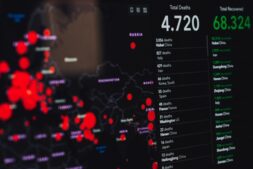 During the ongoing global pandemic, the public desperately needs access to clear, understandable, and unbiased information. It is journalists who are the ones that have to suddenly get their heads around new concepts, like the R number. But many journalists may have developed few science literacy skills and end up amplifying ‘bad’ science.
During the ongoing global pandemic, the public desperately needs access to clear, understandable, and unbiased information. It is journalists who are the ones that have to suddenly get their heads around new concepts, like the R number. But many journalists may have developed few science literacy skills and end up amplifying ‘bad’ science.
Rina Tsubaki, a journalist now focused on improving science literacy via her work at the European Forest Institute, says the biggest negative outcome of lacking science literacy is a loss of trust between scientists, journalists and audiences. In an interview she gave for this Infodemic Toolkit, she said:
It’s really important for journalists to know that the world of science is complex and diverse, with different disciplines, from social science to natural science. Also within the natural sciences, there’s so many different kinds of opposing perspectives and research findings sometimes are in conflict with each other. So it’s really all about uncertainty.
That makes it tough for journalists and their audiences who are often looking for clear cut solutions.
So, what’s the answer?
Gabrielle Richter, a recent Neuroscience and Psychology graduate, is trying to build the competency in the audience themselves, by critically weighing up the science they see reported in the media. On her Instagram feed she points out that we have the reality of slow science, alongside the imperative of fast news. This tendency has been highlighted during the current pandemic.
Science involves experimentation and rigorous testing. And then retesting. Testing in numerous ways to check that a theory holds up takes a long time. Our appetite for news isn’t quite satisfied by the true representation of scientific research, so instead we see daily updates of breakthroughs, painting a picture of a rapid journey which always leads to big results.
Generally, scientific research is peer reviewed, meaning that it is scrutinised by other experts in the field before being published in academic journals. However, our desire for constant updates on COVID-19 has meant that much of the research which makes it into the news has not yet been peer reviewed. – @SkillsForScienceNews
Journalists, though, can also be part of the solution, by employing their critical faculties. An excellent investigative piece by the Reuters news agency recently examined 153 studies that have been published on the new coronavirus. It pointed out that 92 of these were not peer reviewed. For a journalist without basic science literacy skills, that stream of ‘new and shiny solutions’ could have seemed very attractive.
The constant amount of new information surrounding COVID-19, especially when so much of it is not peer reviewed, makes it extremely difficult for journalists to know what to listen to and what to report on. Reporting too quickly on a science story could be spreading misinformation and unintentionally promoting unsubstantiated scientific facts. Accurate reporting is now more vital than ever.
While speedy scientific analysis is highly useful if it’s good, flawed or misleading science can sow panic and may make a disease epidemic worse by prompting false policy moves or encouraging risky behaviour. – Reuters
Journalists can use this Infodemic Toolkit to help better understand how to ask the right questions on, and during, COVID-19. By learning about the process of amplification and verification, journalists can help to slow down whilst staying ‘newsy’ and prevent ‘bad’ science reports.